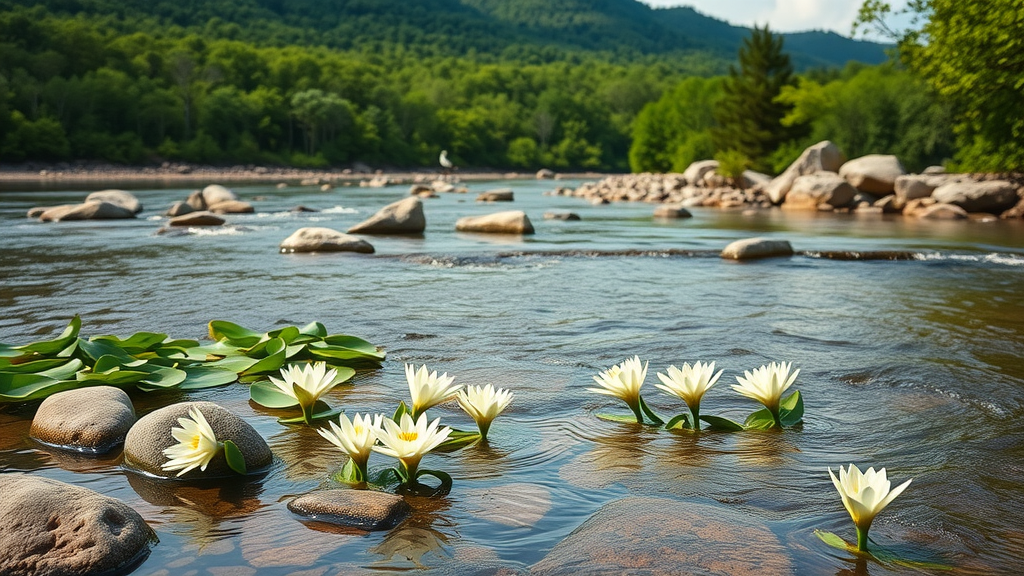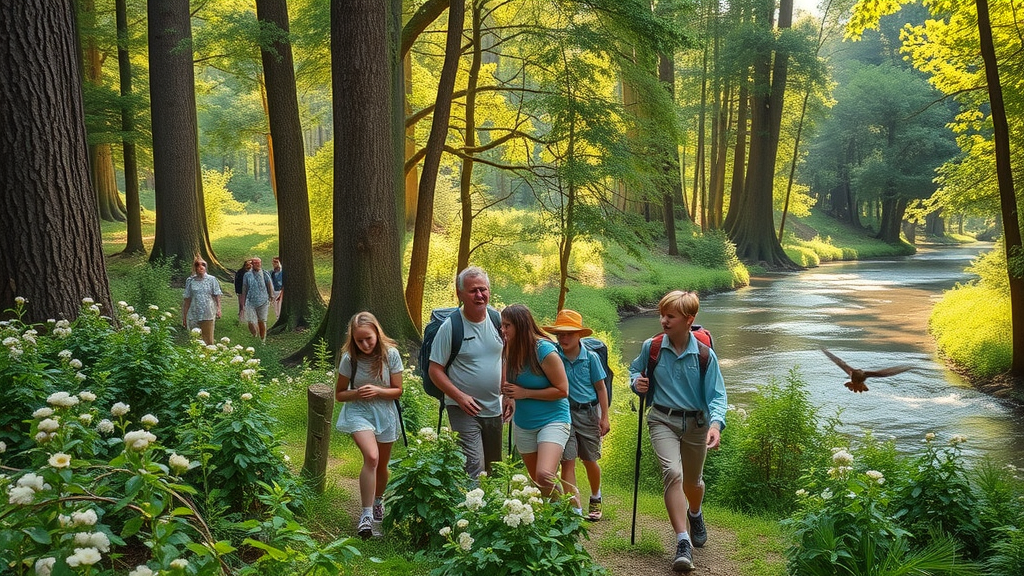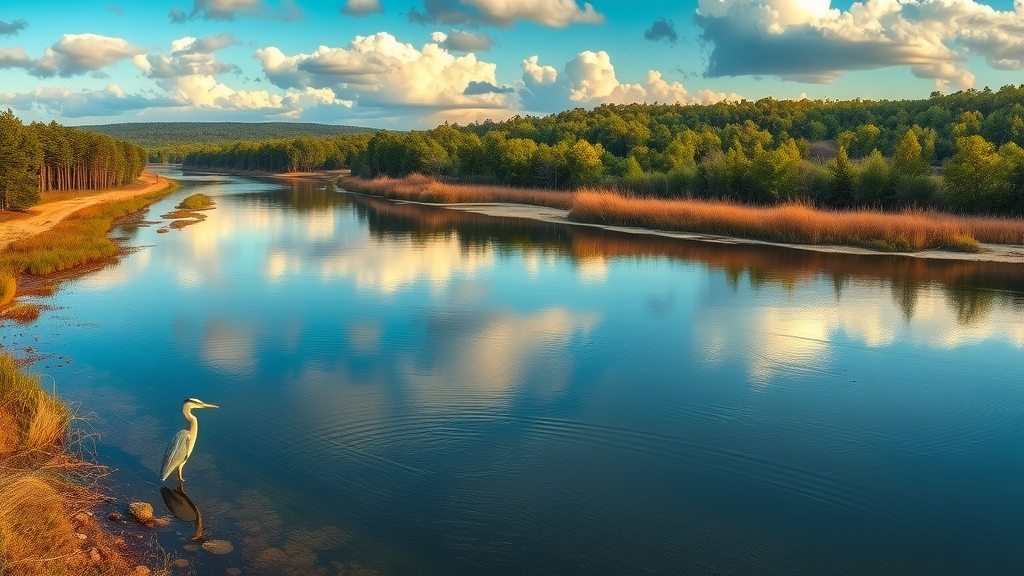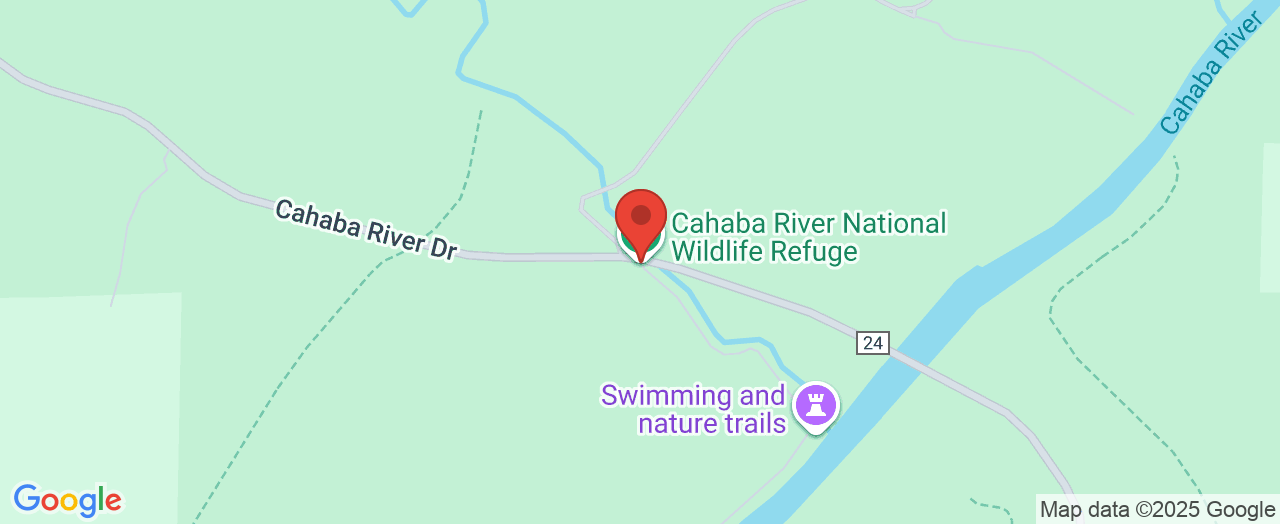Nature’s Sanctuary Unveiled: Why the Cahaba River National Wildlife Refuge Matters Now More Than Ever
Imagine standing along the banks of a river so rare that it shelters some of the most unique plants and animals in the country. The Cahaba River National Wildlife Refuge weaves a vibrant tapestry of natural life in Alabama, yet many remain unaware of the profound ecological importance housed within its 3,681 acres. With river levels rising and habitats facing new pressures each season, understanding why these wild places matter can open our eyes to natural beauty—while impressing upon us all the urgency of protection and stewardship.
The word “refuge” often conjures a sense of safety. For the Cahaba, it’s an active promise: a continual effort to safeguard five federally listed species and restore the river and its surrounding lands to the grandeur that Native Americans and early settlers once knew. The rock shoals, with their pools and riffles, create more than scenic vistas—they form the backbone of delicate, threatened ecosystems not easily found elsewhere. Each visit is a reminder that such sanctuaries are valuable to our shared future, embedding awe and responsibility in equal measure.
Why the Cahaba River National Wildlife Refuge Is a Biological Treasure Worth Understanding

At its core, the Cahaba River National Wildlife Refuge is more than just a protected landscape; it's a living mosaic of rare habitats that support unique plant and animal life. Stretching across Bibb County, Alabama, this refuge is meticulously managed to maintain and restore the biological integrity that has defined the area for centuries. Among its most striking features are the river’s rock shoals, which shape the distinct rhythm of pools and riffles essential for sustaining diverse species. For those who simply view rivers as watercourses, missing the intricate relationships they foster can mean overlooking urgent conservation needs and the direct impact these habitats have on our region’s future.
One of the greatest draws of the refuge is the annual bloom of the imperiled shoals lily—locally known as the Cahaba lily—the largest known stand of which flourishes here. While these blooms are cause for celebration, their imperiled status highlights ongoing challenges. A lack of understanding about the refuge’s unique features and inhabitants can leave critical species vulnerable, and threatens to erase one of Alabama’s great natural legacies. For outdoor lovers, families, and nature learners, recognizing what is truly at stake is the first step in becoming stewards, not just spectators.

The Transformative Benefits of Exploring the Cahaba River National Wildlife Refuge
Stewardship of the Cahaba River National Wildlife Refuge brings direct benefits not only to the wildlife it protects, but to the visitors who walk its trails, swim in its clear pools, and marvel at its rare blooms. By ensuring the ongoing health of unique aquatic systems, the refuge offers a sanctuary for federally threatened species, including the celebrated Cahaba lily. Active management—including prescribed burns and strategic tree planting—revitalizes altered lands, gradually restoring the area to its pre-settlement vibrancy. This ecological renewal isn’t just for scientists or avid birdwatchers; it forms the backdrop for every visitor’s experience, offering moments of awe, learning, and true connection to place.
For families, hikers, and anyone seeking an immersive outdoor adventure close to home, the refuge provides exceptional opportunities for wildlife-dependent recreation. Swimming, fishing, and hiking offer healthy, low-cost ways to experience nature—all set against the backdrop of one of Alabama’s most scenic riverscapes. The refuge’s accessibility and free admission make it a gathering space where generations can come together, fostering appreciation and respect for the natural world. Ultimately, this protected landscape doesn’t just deliver rare natural wonders—it nurtures curiosity and responsibility in all who visit.

How Restoring Natural Habitat Preserves the Past—and Shapes the Future
Thoughtful management of the Cahaba River National Wildlife Refuge anchors its mission: protect what remains, restore what has been lost, and ensure these systems endure for decades to come. Utilizing tools such as prescribed fire and reforestation, land managers work to recreate the landscapes native tribes and early settlers once knew. This deep respect for history is visible in every stretch of riverbank and textured rock shoal—where returning to pre-settlement conditions isn’t just a vision, but a patient, hands-on process. Each restoration is a commitment: an acknowledgment of the past and a legacy for the future.
In a changing world, these conservation efforts mean the difference between survival and decline for the refuge’s most threatened species. The refuge’s management goals are ambitious in scope and long-term in philosophy, recognizing that protecting a living river system requires constant adaptation and partnership. For today’s visitors, this historical framing offers deeper meaning—each step along the trails is a chance to witness an active conservation story unfolding in real time.
The Enduring Beauty and Fragility of the Cahaba Lily
Among the refuge’s most celebrated features, the Cahaba lily symbolizes both resilience and vulnerability. Found in abundance only where river shoals create the perfect balance of water and rock, this flower’s brief annual bloom draws nature lovers from across the region to the festival that bears its name. The Cahaba River National Wildlife Refuge is home to the world’s largest known stand of these lilies—a testament to both the river’s enduring health and the ongoing threats to these habitats. Heavy rains, rising river levels, and shifting conditions are reminders that even the most spectacular natural displays depend on delicate ecological balances.

For visitors, witnessing the lilies in full bloom is more than just an outdoor outing—it becomes a lesson in interconnection, patience, and gratitude. The beauty of the Cahaba lily serves as a rallying point for conservation action, inviting each generation to participate in the ongoing protection of land, water, and cultural heritage. The festival, weather warnings, and efforts to monitor river conditions all demonstrate a community coming together around a common cause: preserving Alabama’s wild beauty for present and future discovery.
The Refuge’s Unmatched Opportunities for Outdoor Recreation and Learning
While the refuge’s ecological mission takes center stage, its value as a destination for recreation and environmental education cannot be overstated. Visitors enjoy peaceful solitude while fishing in clear pools, swimming in safe stretches, and hiking through restored woodlands. The refuge deftly balances accessibility with conservation, providing a uniquely welcoming environment that’s both well-kept and uncrowded, according to those who know it best. Free admission removes barriers, allowing families, students, and explorers of all ages to deepen their appreciation for nature without financial stress.
These outdoor experiences are more than leisure activities—they are hands-on lessons in stewardship and respect for the natural world. By fostering interaction with complex and sensitive ecosystems, the refuge cultivates curiosity, understanding, and a sense of investment in Alabama’s environmental future. Whether you’re catching sight of rare species, picnicking by the river, or simply enjoying the calm, the refuge transforms moments outside into lasting memories—and lifelong commitments to conservation.
Guiding Principles from the Heart of the Cahaba River National Wildlife Refuge
The Cahaba River National Wildlife Refuge stands as an industry voice in land and water conservation, grounded in a philosophy of restoration, stewardship, and community connection. Its management goals are deeply rooted in honoring the biological richness and historical context of the land—seeking to maintain ecosystem integrity even amid vast and lasting environmental impacts. The refuge’s mission is centered on broad, long-term endeavors, recognizing that returning the landscape to pre-settlement conditions is not a quick fix, but a generational investment.
The approach taken by the refuge prioritizes both precision in habitat management and openness to public enjoyment. By employing practical conservation tools such as prescribed fire and reforestation, those guiding the refuge demonstrate a commitment to adaptive, science-driven strategies. At the same time, they foster opportunities for visitors to form direct, meaningful connections with the land and its wildlife—a reminder that human enjoyment and ecological protection are not mutually exclusive, but mutually enhancing goals.
This blend of innovation, tradition, and public service defines the unique value of the Cahaba River National Wildlife Refuge. Serving as both sanctuary and learning ground, the refuge models the long-term thinking and respect for nature critical to Alabama’s conservation story.
A Visitor’s Reflection: Embracing Natural Beauty at the Refuge
The real-world impact and transformative experiences of exploring the Cahaba River National Wildlife Refuge are best captured in the words of those who have seen its wonders firsthand. Walking its trails or swimming in its natural pools is a chance to discover both solitude and community—a lesson beautifully summed up in this observation:
I've been wanting to go and finally quit putting it off. The place is beautiful. Absolutely stunning. A few families, but not over crowded, well kept. If you're looking to do something fun and cheap with your kids, your friends, or whomever, it doesn't matter, admission is free and you'll love it. Swimming, fishing, hiking...
The sense of wonder and gratitude expressed by visitors shows that the refuge’s true gift is not just its rare species or scenic views, but its ability to welcome everyone into nature’s embrace. By taking the step to visit or support the refuge, anyone can experience both enjoyment today and contribute to ongoing conservation that ensures these natural gifts endure for generations to come.
Unveiling the Lasting Impact of the Cahaba River National Wildlife Refuge
The Cahaba River National Wildlife Refuge exemplifies what’s possible when purposeful conservation aligns with public engagement and a respect for natural history. Through active management, restoration efforts, and a commitment to preservation, the refuge stands as a living classroom—teaching the value of unique species, integrated habitats, and the shared responsibility we carry for their survival. As visitors continue to explore its trails and witness the seasonal spectacle of the Cahaba lily, their experience reinforces why places like this matter—not just for today’s adventures, but for the future fabric of Alabama’s wild landscape.
With its expert stewardship and clear mission, the Cahaba River National Wildlife Refuge ensures that every footstep along the riverbank becomes part of a larger story—one that celebrates both the natural beauty and the long-term viability of Alabama’s cherished ecosystems.
Contact the Experts at Cahaba River National Wildlife Refuge
If you’d like to learn more about how Cahaba River National Wildlife Refuge could benefit your appreciation of Alabama’s natural wonders, contact the team at Cahaba River National Wildlife Refuge.
📍 Address: 3WXQ+6MJ, West Blocton, AL 35184, USA
📞 Phone: +1 256-848-6833
🌐 Website: https://www.fws.gov/refuge/cahaba-river
Cahaba River National Wildlife Refuge Location and Hours
🕒 Hours of Operation:
📅 Monday: Open 24 hours
📅 Tuesday: Open 24 hours
📅 Wednesday: Open 24 hours
📅 Thursday: Open 24 hours
📅 Friday: Open 24 hours
📅 Saturday: Open 24 hours
📅 Sunday: Open 24 hours

 Add Row
Add Row  Add
Add 





Write A Comment